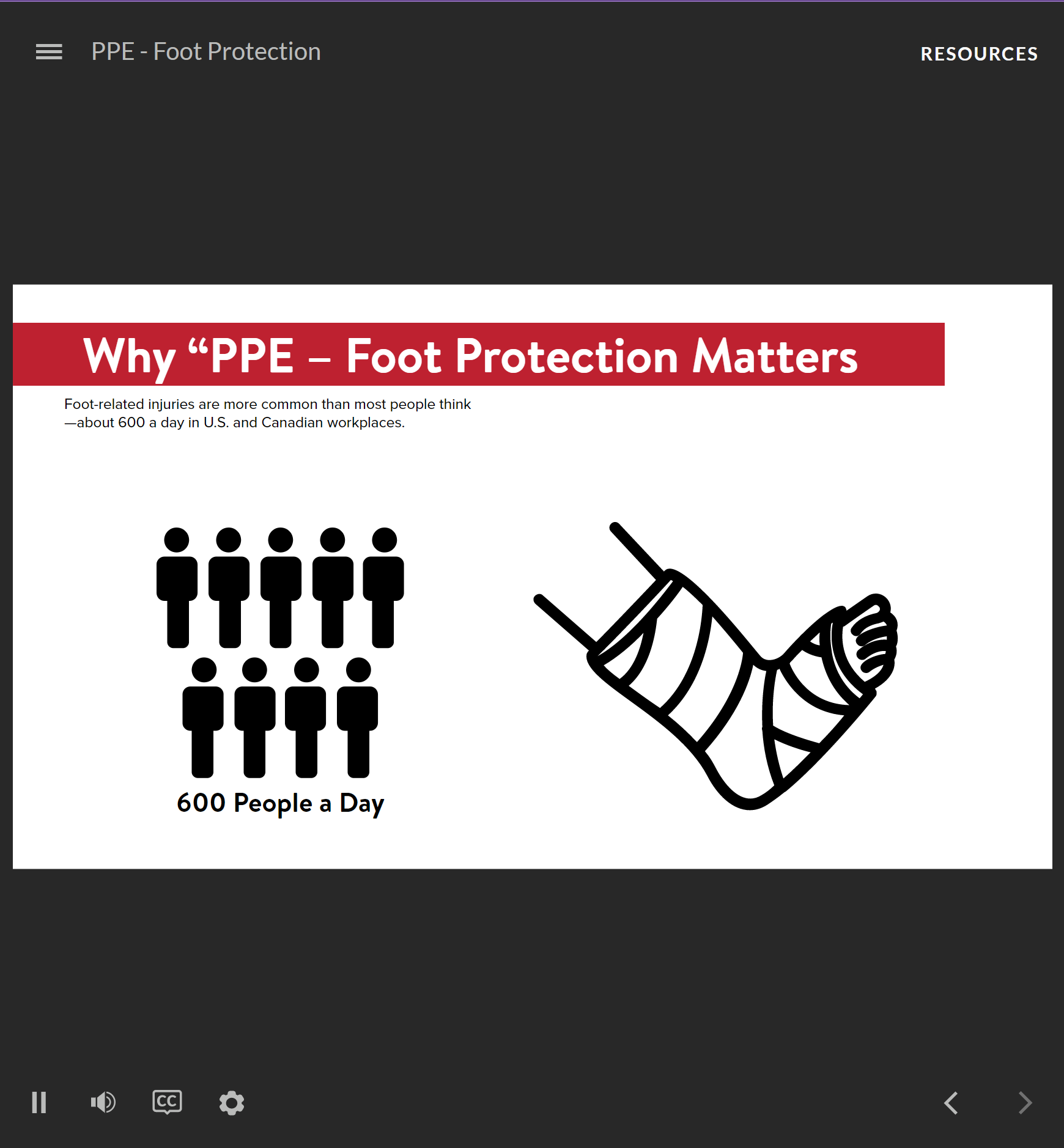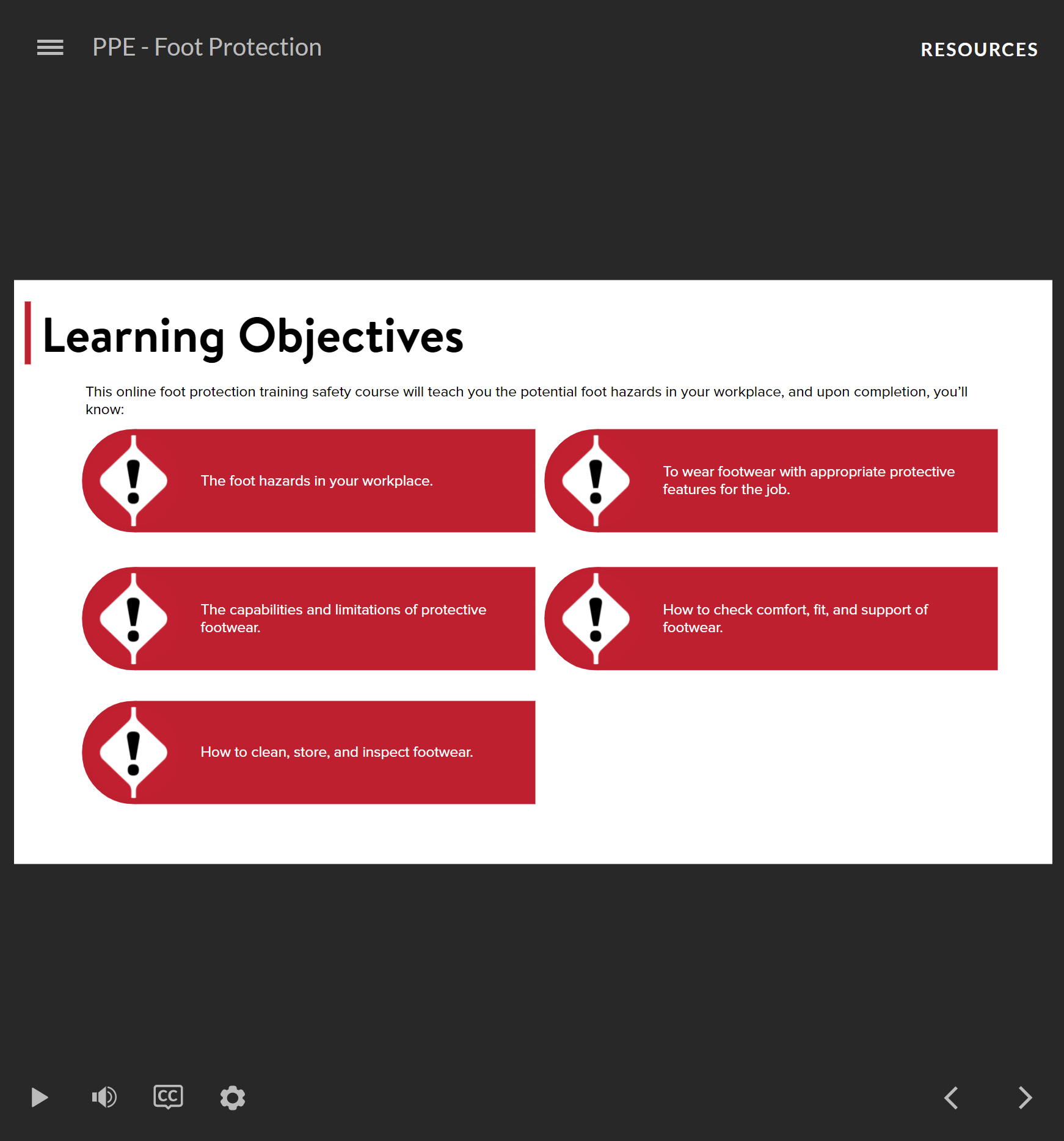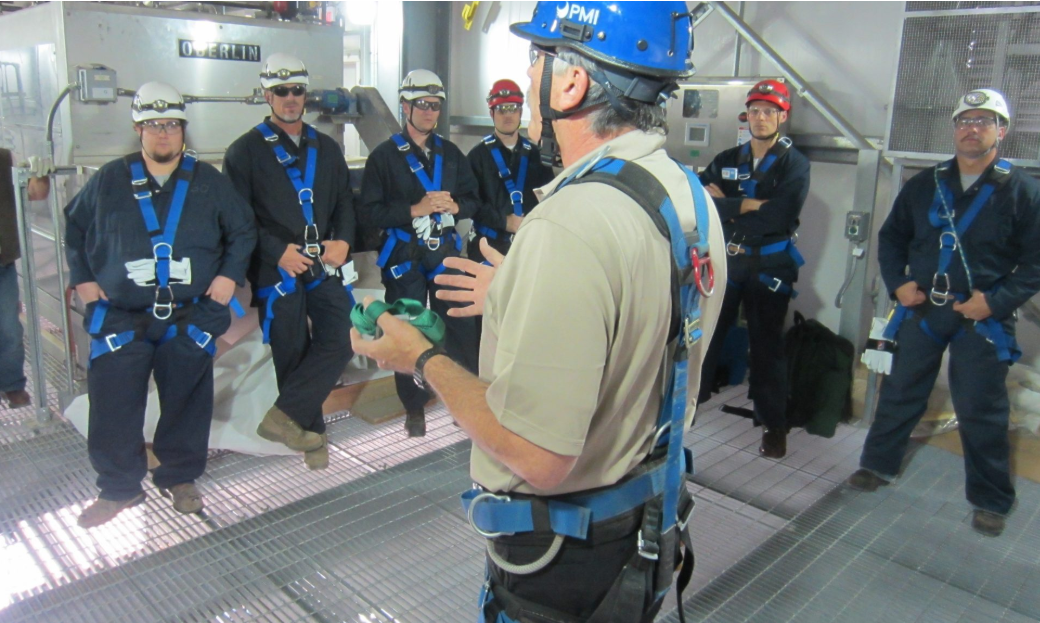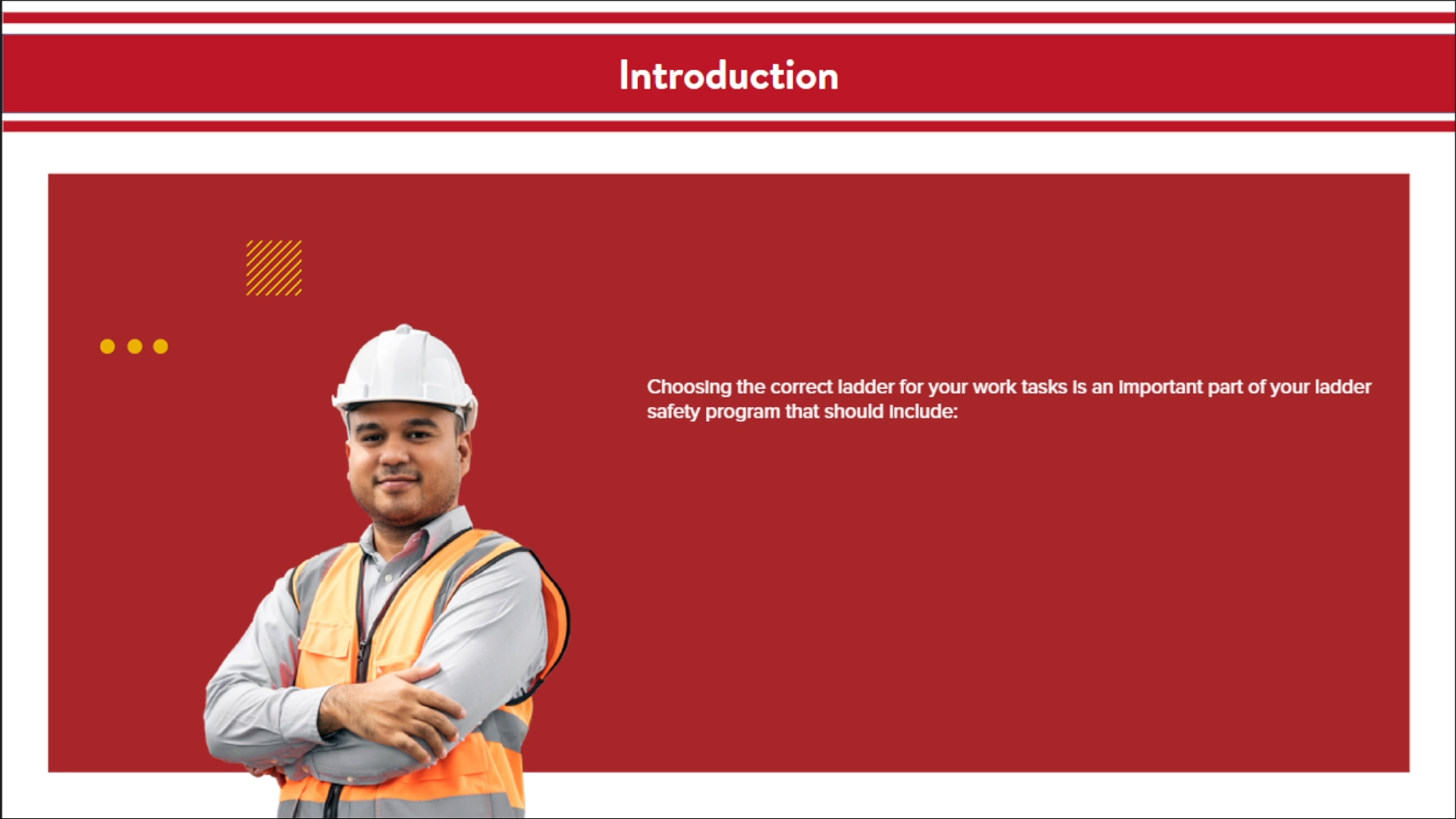This course will cover the potential hazards in your workplace, what footwear to wear, the capabilities and limitations of footwear, how to check comfort, fit and support of footwear and how to clean, store and inspect your footwear.
PPE – Personal Protective Equipment: Foot Protection
$24.15
Description
Learning Objectives
- Recognize the value of PPE for the foot
- Identify common workplace hazards regarding the foot
- Identify common types of PPE for the foot
- Describe the proper fit for PPE for the foot
- Explain how to care for PPE for the foot
- List employee and employer responsibilities regarding PPE for the foot
Personal Protective Equipment (PPE) for your feet. That’s special boots and shoes. Would you be able to recognize, identify and describe proper footwear for each scenario while on the job?
Workplace accidents resulting from inappropriate footwear can put an individual out of work and cost both the employer and injured worker a lot of money. Without proper foot protection the likelihood of injury increases dramatically, which is why choosing the right footwear is so important.
Workplace Dangers
Depending on your job duties you are susceptible to different types of injuries. Workplace dangers that contribute to the need for protective footwear include:
- Falling heavy objects (bricks, machines)
- Sharp items (nails)
- Hot or cold materials (cold storage worker, asphalt paver)
- Electric current (electric current that conducts through shoes, such as those you would encounter as an electrician or utility worker)
- Hazardous liquids (welding sparks, molten metal, pesticide applicator)
- Slippery walking surfaces (kitchen worker, auto garage worker)
Types of Foot Protection
Workplace footwear comes in a variety of forms, from different types of boots to non-shoe protection. OSHA provides a list of types of foot protection and boots for the workplace:
Metatarsal guards: Metatarsal guards can be strapped to the outside of your shoes, and they protect your instep area from getting crushed by heavy objects.
Toe guards: Toe guards fit over the ends of regular shoes to help prevent foot injuries.
Electrically conductive boots: Electrically conductive boots protect against the buildup of static electricity. Employees working in hazardous locations such as explosives manufacturing facilities or grain elevators must wear conductive shoes to reduce the risk of static electricity buildup on the body that could produce a spark and cause an explosion or fire.
Electrical hazard, safety-toe boots: Electrical hazard, safety-toe boots are nonconductive and will prevent the wearers’ feet from completing an electrical circuit to the ground. These shoes can protect against open circuits of up to 600 volts in dry conditions and help reduce the risk of a worker becoming a path for hazardous electrical energy.
Foundry boots: Foundry boots insulate the feet from the extreme heat of molten metal, and keep hot metal from lodging in shoe eyelets, tongues or other shoe parts.
Waterproof or water-resistant boots: Waterproof and water-resistant boots help keep the wearers’ feet dry when a working in wet conditions.
Slip-resistant boots: Slip-resistant boots have special soles that provide traction on wet or oily floors.
Insulated boots: Insulated boots keep the wearer’s feet warm in cold weather.
Considerations When Choosing
The American Orthopedic Foot & Ankle Society provides the following tips to use as a guideline while choosing work boots:
MATERIAL
The material of the boot you choose should be based on you work environment. Constructiongear.com gives the following examples of boot material:
Nylon mesh and leather combination: Nylon and leather combination boots are good for warmer weather because they are lightweight, flexible and breathable. The downside is that nylon and leather combination boots tend to be less water resistant than full-grain leather boots.
Full-grain leather: Full-grain leather boots are water resistant, durable and supportive. They are heavier and less breathable than nylon mesh and leather combinations, but they typically last longer and are a good choice when working in harsh conditions.
Waterproof liners: Waterproof liners are built into many work boots. The liners keep water out, but allow sweat to escape.
WORK ENVIRONMENT Consider where you will be working and what dangers you will encounter, such as falling objects and chemical hazards, when choosing a work boot. Purchase the boot that will protect you best from potential injury from your specific workplace dangers.
Soles: Make sure the footwear soles are appropriate to your working conditions. Soles can be designed to resist slips and protect your feet from heat, puncture and electrical shock.
Comfort and fit: The work boots you choose should feel good on your feet from the minute you put them on. Don’t purchase boot that need to be broken in. Poorly fitting work boots can result in bunions, corns, calluses, and other foot problems. The toe box needs to be deep enough so you can move all your toes inside without feeling pressure. Try boots on at the end of the day when your feet are largest, and wear your usual work socks.
Not all training is equal. With SafetyNow, learners and leaders will notice the difference in value:
- Quality: Professionally-researched and designed using the latest mobile and responsive technologies
- Convenience: Works instantly on any device, desktop or mobile
- Time savings: What learners need to know, not extra fluff or legalese
- Reporting: Consistent, instant compliance records available anytime
- Support: Customer and learner support included at no charge
- Any Learning Management System (LMS) Use with any SCORM, AICC, xAPI, TinCan, HTML5, or other LMS (learning management system).
- Any Device Desktop, laptop, tablet, or mobile phone – it simply works, everywhere.
- Engaging Professionally-developed, including an on-screen host and modern, easy-to-understand text, media, and voiceovers.
- Unlimited Attempts Each module can be taken as many times as required to get a passing grade. Unlike our competitor’s courses, if you get an answer wrong, you are redirected to the exact eLearning segment you struggled with… you don’t need to go through the entire module again, just the one part you need a refresher on.
Only logged in customers who have purchased this product may leave a review.














Reviews
There are no reviews yet.